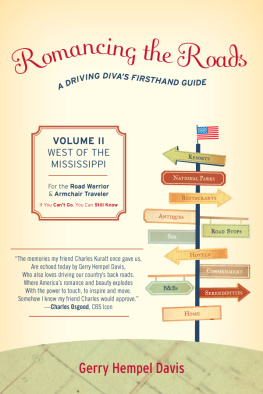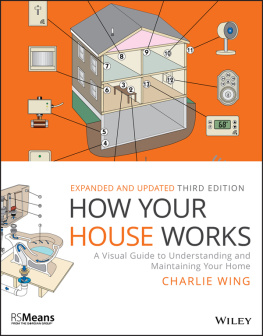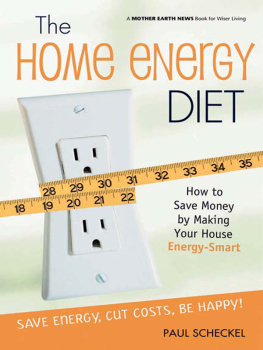THE FIRST-TIME
HOMEOWNERS
SURVIVAL GUIDE
THE FIRST-TIME
HOMEOWNERS
SURVIVAL GUIDE
A Crash Course in Dealing with Repairs,
Renovations, Property Tax Issues,
and Other Potential Disasters
SID DAVIS

CONTENTS
A comprehensive glossary along with printable checklists and worksheets are available at www.sid-davis.com by clicking on the book banner.
PREFACE
Your home is likely to be the biggest investment youll ever make. You need to care for it and nurture it, not only because its where you live, but because your financial future and emotional well-being may well depend on it. Its therefore critical to keep it in good condition. That way it will be a joy to live in and also give you maximum return when you sell. How to do this is the goal of this book.
If youre a first-time homeowner who has just moved in and feels overwhelmed, or you want to brush up on the nuts and bolts of making the most of your home, this book is for you. Some of the important items contained in the following chapters are:
Easy-to-follow explanations and charts that illustrate how different systems and components work to make your home a marvel of comfort and convenience.
Tips and how-to instructions for handling easy repairs on your own, even if youre not sure how a screwdriver works.
Suggestions for hiring and working with handymen and contractors on those projects for which you need professional help, along with tips on how not to get ripped off.
Tips on which upgrades add to the value of your home and which ones dont.
Checklists at the end of each chapter to remind you of things to do to keep your homes components working smoothly. These checklists will also keep you on top of what needs to be done to make sure your home weathers the seasonal changes.
How to avoid losing thousands of dollars in unneeded repairs and scams that target homeowners.
Money-saving tips on buying insurance, replacing appliances, choosing floor coverings and other materials, and making upgrades.
In other words, this is a book youll want to keep in a handy place so you can refer to it often when pesky homeowner problems come at you fast, demanding prompt action and/or a credit card number.
Also, for a comprehensive glossary along with printable checklists and worksheets, go to www.sid-davis.com, and click on the book banner.
THE FIRST-TIME
HOMEOWNERS
SURVIVAL GUIDE
CHAPTER 1
YOUR HOMES ELECTRICAL SYSTEM 101
In this chapter youll learn:
 How your homes electrical system works
How your homes electrical system works
 Potential electrical problems to look out for
Potential electrical problems to look out for
 Quick and easy electrical fixes you can handle on your own
Quick and easy electrical fixes you can handle on your own
 When you should call an electrician and how to hire one
When you should call an electrician and how to hire one
 A troubleshooting guide that will help you track down and solve problems
A troubleshooting guide that will help you track down and solve problems
Few things are more feared, less understood, and more discouraging to a new homeowner than the electrical system. Fortunately, it doesnt have to be that way. If you can chew gum and tie your running-shoe laces at the same time, you can understand and perform common electrical maintenance. Its that straightforward! Even when youre hiring professionals you need to have a basic understanding of your electrical system, if for no other reason than to understand what youre being charged.
HOW TO READ THE POWER METER AND MAKE SURE YOURE NOT OVERCHARGED
One question many homeowners ask about their electrical service is how they can be sure the power company is not overcharging them. Meter readers are in a hurry and can misread the meter. Sometimes that can be in your favor, other times the bill goes up dramatically and you wonder why. You can solve the uncertainty be reading the electric meter dials yourself and keeping a log of your usage.
The power company charges you for power used in blocks of 1,000 watts used for one hour, or one kilowatt-hour (kwh). If you look closely at your electric meter, youll notice a small spinning wheel in the middle. When theres current flowing, the small wheel is spinning, which means its costing you.
There are two types of meters for recording electrical usage. One is a meter similar to the odometer on your car, where you can read the kilowatts used just as you would read the miles driven. The other meter has five dials numbered like a clock face, except that the numbers run from 0 to 9 counter-clock wise (see ).
To read the dials, simply start with the left-hand dial and jot down the numbers. If the pointer lies between two numbers, always use the lower number even if the hand is almost on a higher number. For example, in the meter reading would be 06573.
If you want to verify the power companys reading, read the meter the same day the meter reader stops by, and again the following month. Then compare the usage to whats shown on your power bill.
Figure 1-1.

shows the previous and current meter readings, 5142 and 6075. Subtracting the two readings shows that 933 kilowatts were used this billing period. If your meter reading varies more than a few kwh from what the billing shows, call your power companys customer service number on your statement.
Some utilities charge more per kilowatt-hour over a certain amount, and/or for usage during peak hours (1 P.M. to 8 P.M., for instance).
In for example, the first 400 kilowatts cost just over 6.9 cents per kwh. The next 533 kilowatts cost over 7.8 cents per kwh, for a total of $69.70 for the billing period.
Of course, power costs vary depending on the area you live in, but check your bill for the power companys website. They usually have special rates and programs that can help you lower your power costs.
Figure 1-2.

THE DANGER OF WORKING WITH ELECTRICAL POWER
Broadly speaking, the electricity that powers your MP3 player, computer, or refrigerator is the same as lightning; the only difference is that one is controlled and the other is raw, untapped electrical energy.
When the power company generates electrical energy and distributes it over a long distances, it needs to maintain a high voltage in the lines. Its helpful to compare voltage to water pressure. A lot of pressure (lbs. per square inch) is needed to push water through the pipes to the those homes on the system that are farthest removed. Likewise, lots of electrical pressure (volts)is needed to get power out to the power companys farthest removed customers.
Another important electrical measurement is amps, which is the amount of electrical power you have to work with. Using the water analogy, the amount of water in a system is measured in gallons, whereas the amount of power coming into your home is measured in amps. For example, to show the difference between volts and amps, shuffling your feet across the carpet may generate a charge of about 400 volts. That this charge will jump from you to another object shows theres a lot of pressure. But its not dangerous because there are so few amps involved, just a lot of voltage.
















 How your homes electrical system works
How your homes electrical system works
